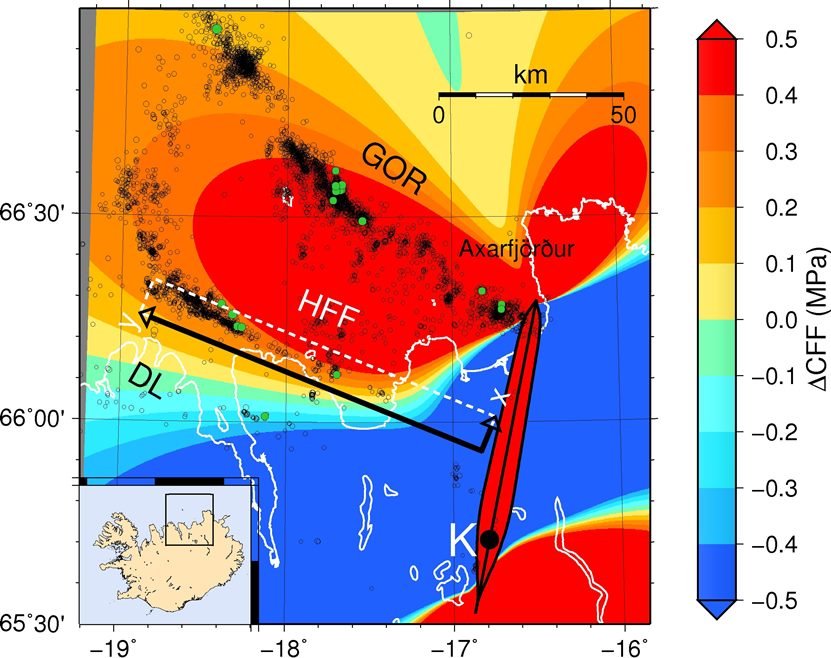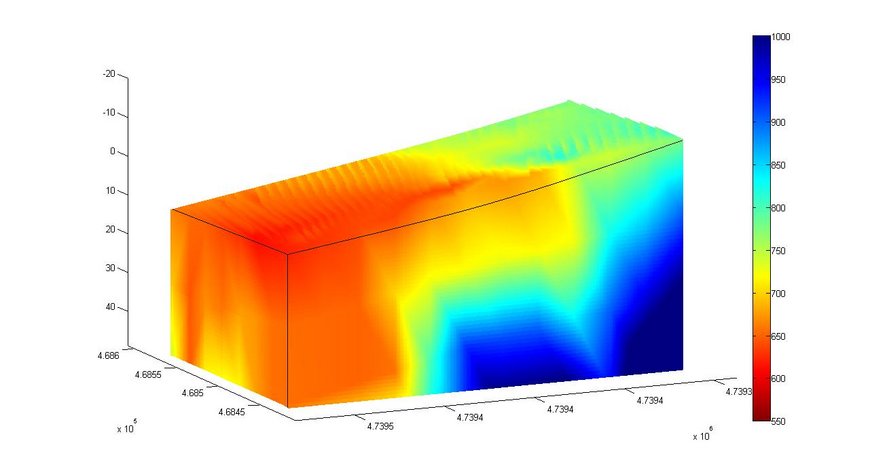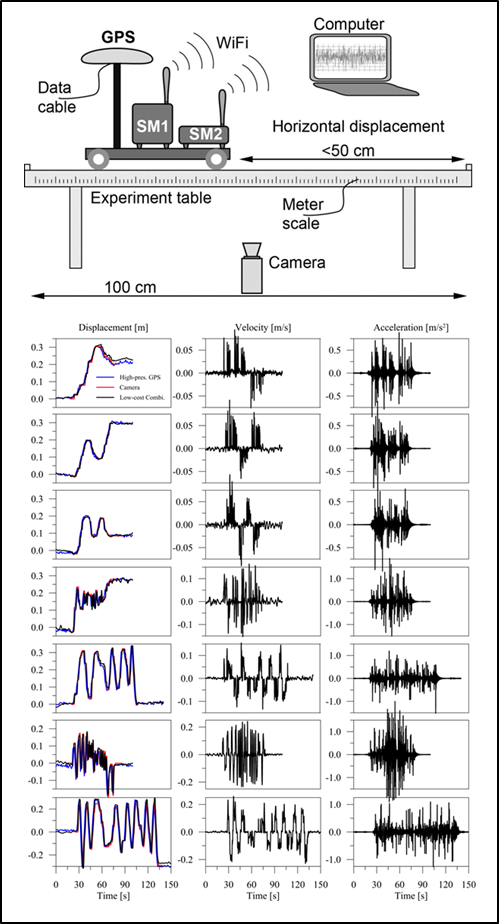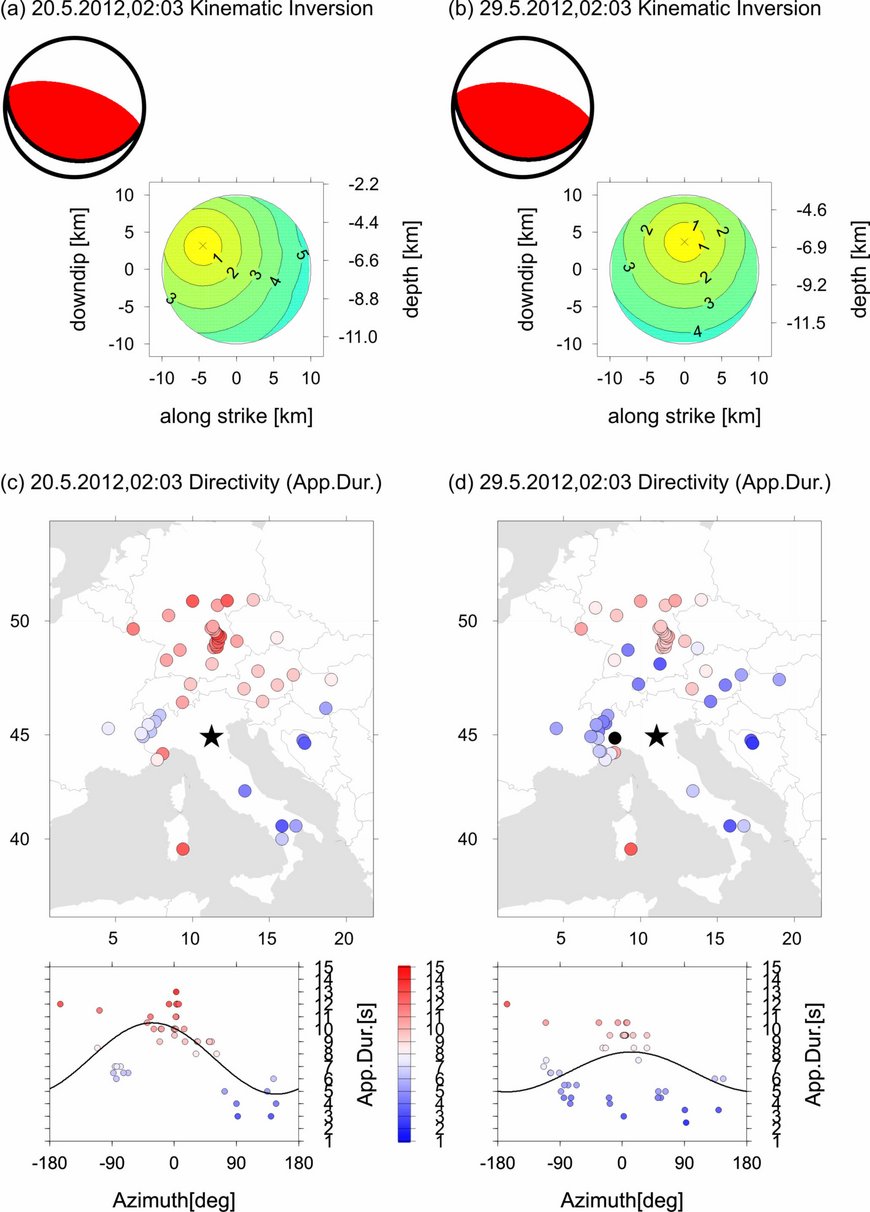Maccaferri, F., Rivalta, E., Passarelli, L., Jonsson, S. (2013):
The stress shadow induced by the 1975-1984 Krafla rifting episode.
The 1975–1984 Krafla rifting episode in northern Iceland was responsible for a huge deformation of the surrounding crust and possibly induced a significant stress change along the Húsavík-Flatey Fault (HFF), an active transform fault that had previously been the source of several magnitude 6–7 earthquakes. In this study we first build a stress model for the Krafla rifting episode and then compare the long-term predictions from Dieterich model with seismological observations from the SIL catalog (1995–2011) in northern Iceland. We find out that the rifting episode induced a stress shadow (negative Coulomb stress change) on the eastern half of the fault, and we also find that the seismicity rates on the central part of the HFF increased significantly in the last 17 years, with the seismicity progressively recovering from west to east.Our observations confirm that rate-state theory successfully describes the long-term seismic rate variation during the reloading phase of a fault invested by a negative Coulomb stress.Coincident with this recovery, we find that the b-value of the frequency-magnitude distribution changed significantly over time. We conclude that the rift-induced stress shadow not only decreased the seismic rate but also temporarily modified how the system releases seismic energy.
| JGR, 118, 3, 1109-1121 | EDOC: 20287 | 10.1002/jgrb.50134 | PDF |
M. Pilz, D. Bindi, S. Parolai
„3D passive imaging of complex seismic fault systems: evidence of surface traces of the Issyk-Ata fault (Kyrgyzstan)“
Information on the mechanical characteristics of the surficial structure is of major importance for site effect studies and seismic hazard assessment. Marco Pilz et al. (M. Pilz, S. Parolai, D. Bindi, Three-dimensional passive imaging of complex seismic fault systems: evidence of surface traces of the Issyk-Ata fault (Kyrgyzstan), Geophysical Journal International) could show that an ad-hoc passive seismic tomography approach can identify and describe complex three-dimensional structures, which can help to accurately and efficiently map the shear-wave velocities of the surficial soil layers, even in cases of significant topography relief. No active sources are required; the method is based on the correlation of high-frequency ambient seismic noise only. They could show that this novel approach applied across the Issyk-Ata fault, Kyrgyzstan, which is located at southern border of the capital, Bishkek, and which is expected to generate an earthquake up to a magnitude 7.5, could identify two different small fault branches which can perturb the propagation on the main fault. | Geophys. J. Int. 194 (3): 1955-1965 | 10.1093/gji/ggt214 |
R.Tu, R.Wang, M.Ge, T.R.Walter, M.Ramatschi, C.Milkereit, D. Bindi, T.Dahm
Cost-effective monitoring of groundmotionrelated to earthquakes, landslides or volcanic activityby joint use of a single-frequency GPS and a MEMSaccelerometer
A new approach is proposed for joint processing of single-frequency GPS and MEMS (microelectromechanical systems) accelerometer data in real time. Outdoor experiments under controlled conditions have shown that the combined low-cost system is able to provide real-time broadband information of strong ground motion.
| EDOC: 20927 | 10.1002/grl.50653 |
Cesca, S., Braun, T., Maccaferri, F., Passarelli, L., Rivalta, E., Dahm, T.
Source modelling of the M5-6 Emilia-Romagna, Italy, earthquakes (May 20-29, 2012).
The seismological works timely investigated seismic source parameters and earthquake triggering processes for the main two events of the seismic sequence strucking in May 2012 the Emilia-Romagna region, Italy. Based on point and finite source parameters, static stress changes and the rate-and-state model, we suggest that the second fault segment was already prone to rupture and estimate that peak ground acceleration could have increased by 50%, if the extended rupture area of both events would have ruptured at once.
| EDOC: 20299 |GJI 10.1093/gji/ggt069 |





